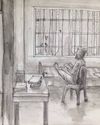Three scholars on the making of Indian literature.

EVERY STUDY OF MODERN ART or literature, right at the outset, poses for itself the awkward problem of defining what “modernity” actually means. Does it have to do with a particular chapter in human history, or does it concern human sensibility across the ages? Is there a modern way of doing things—of making paintings, writing novels, building cities? Or is modernity only a matter of perception, a way of seeing things? Perhaps it is a bit of both.
Part of the modernist project in twentieth-century Europe—with figures such as Pablo Picasso and TS Eliot at its helm—involved, simultaneously, locating the modern element in ancient poetry and traditional tribal art, and recontextualising it in the present: in the here and now of modernity. Eliot’s ‘The Waste Land’ was a faithful enactment of this modernist outlook, with intermingling echoes—many of them verbatim—of Homer, Ovid, the Bible and the Upanishads. The great poem is like a monument composed of bits and pieces of other monuments. This may be the manner Picasso had in mind when he defined modern art as a sum of destructions—and the title of Eliot’s poem is uncannily in keeping with this definition.
この記事は The Caravan の February 2017 版に掲載されています。
7 日間の Magzter GOLD 無料トライアルを開始して、何千もの厳選されたプレミアム ストーリー、8,500 以上の雑誌や新聞にアクセスしてください。
すでに購読者です ? サインイン
この記事は The Caravan の February 2017 版に掲載されています。
7 日間の Magzter GOLD 無料トライアルを開始して、何千もの厳選されたプレミアム ストーリー、8,500 以上の雑誌や新聞にアクセスしてください。
すでに購読者です? サインイン

Mob Mentality
How the Modi government fuels a dangerous vigilantism

RIP TIDES
Shahidul Alam’s exploration of Bangladeshi photography and activism

Trickle-down Effect
Nepal–India tensions have advanced from the diplomatic level to the public sphere

Editor's Pick
ON 23 SEPTEMBER 1950, the diplomat Ralph Bunche, seen here addressing the 1965 Selma to Montgomery March, was awarded the Nobel Peace Prize. The first black Nobel laureate, Bunche was awarded the prize for his efforts in ending the 1948 Arab–Israeli War.

Shades of The Grey
A Pune bakery rejects the rigid binaries of everyday life / Gender

Scorched Hearths
A photographer-nurse recalls the Delhi violence

Licence to Kill
A photojournalist’s account of documenting the Delhi violence

CRIME AND PREJUDICE
The BJP and Delhi Police’s hand in the Delhi violence

Bled Dry
How India exploits health workers

Status Update
India’s telling silence on the Hagia Sophia controversy